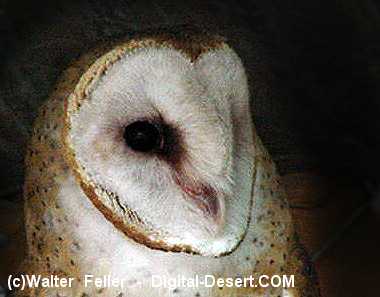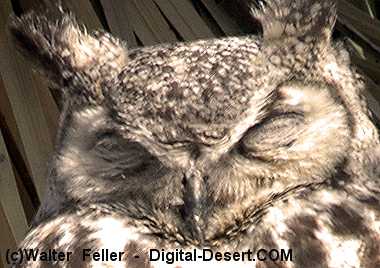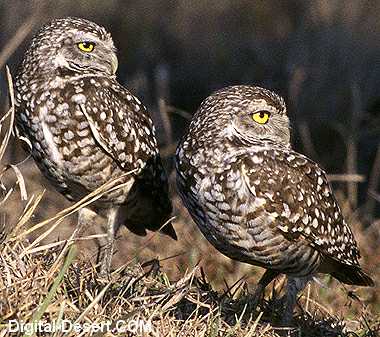Characteristics of the Different Raptor Families
Owls
- Species vary in size, but typically have large, round heads, with forward-facing eyes framed
by a feathered facial disk.
- They have broad wings, short tails, lightweight bodies, and unusually soft, fluffy body
feathers.
- Typically nocturnal predators, relying on their excellent vision and hearing to catch food.
- Some owls have tufts of feathers on top of their head, often called horns or ears, they are
neither but are thought to serve as camouflage or behavioral signaling devices.
- Have large asymmetrical ear cavities located behind the eyes on each side of the face,
underneath the feathers.
- The asymmetrical ear cavities allow owls to locate prey by triangulation of sound.
- The round face and facial disks of feathers around the eyes also aid in hearing by funneling
sound to the ears.
- The eyes are fixed in their sockets so they are only able to see what is in front of them. To
see the things around them, they must rotate the head.
- They can rotate their heads 270° to the left or right but not in a complete circle. Owls have
a total of 14 neck vertebra which allow this flexibility.
- Have four toes; a permanent back toe and three front toes, one of which can rotate to the
rear to improve their grip while capturing prey.
- Most owls have feathers down to their talons unlike most non-owl birds of prey; thought to
help in keeping warm and protection from prey bites.
- Owls have soft-edged flight feathers that allow them to fly silently; the flight feathers of an
owl are slightly spaced to allow air when flying to move around and through them helping
to keep noise down.
- Diet consists of rodents and small mammals; their digestive system makes use of the
nutritious portions of the prey, and the undigested parts (hair, bones, claws, teeth, etc.) are
regurgitated in the form of a pellet.
< Previous - Contents - Next >

Barn Owl
 Great Horned Owl
Great Horned Owl
Burrowing Owl - USFWS photo by L. Karney